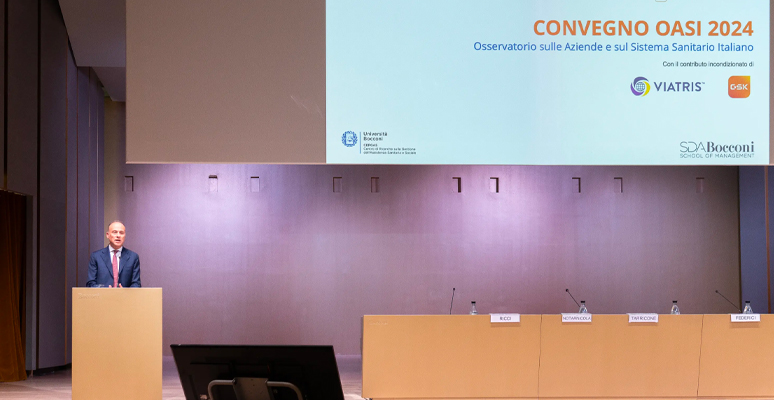
- Start date
- Duration
- Format
- Language
- 2 Apr 2025
- 16 days
- Class
- Italian
Acquire the managerial skills needed to play your organizational and managerial role effectively and govern change in the social care and healthcare system.
CERGAS Bocconi's OASI 2022 report: after the pandemic, healthcare spending and staffing remain low, whereas demographic trends predict a growing gap between resources and needs. The NRRP will not be enough to bridge it, and management of healthcare companies will be required to navigate and lead coming changes.
The pandemic and funds from the National Recovery and Resilience Plan (NRRP) seemed to have marked a turning point for the Italian National Health Service (Servizio Sanitario Nazionale, SSN). The most widespread narrative speaks of the massive funding that the NRRP allocates to healthcare and the redefinition of some key policies, from the reorganization of the regional network of services and the diffusion of telehealth to the increased number of spots in university courses in Medicine and Surgery and improvement of the Fascicolo Sanitario Elettronico (electronic health records).
However, many of the trends triggered by the pandemic – from the increase in public spending on health care to the hiring of new staff – have already reversed, or at least slowed down, warns the OASI Report 2022 on companies and the Italian health system by CERGAS Bocconi. It was presented this morning at the university.
"The incidence of SSN spending on GDP, at 7.2-7.3 percent in 2021, is expected to fall to 7 percent in 2022 and 6 percent in 2025, while stable personnel hires in 2020 were largely offset by retirements, due to the high average age of SSN employees," says Francesco Longo, the Report's scientific manager.
The rate of coverage of non-COVID patients also fell even further with longer waiting lists for both inpatient and outpatient care.
In light of the funding data, the NRRP, in terms of health care, must necessarily become a plan of reorganization and reallocation of resources, rather than an intervention of expansion and modernization. The plan calls for 20-billion-euro investments in health care over 6 years, thus 3.3 billion per year, or less than 3 percent of the 130 billion in current annual health care spending, the Report clarifies.
"Ultimately," says the Report's coordinator, Alberto Ricci, "demographic trends predict a widening gap between resources and needs and present some politically fraught problems because any solution one might want to identify turns out to be of little consolation and therefore naturally unpopular."
In 2021, there were 7 births and 12 deaths per 1,000 inhabitants; throughout the year, Italy's population declined by 253,000, only slightly increased by the 59,000 deaths caused by COVID. The very low birth rate (1.25 children per woman: 2.2 would be needed to keep the population stable) and high life expectancy (82 years) mean that the elderly already account for 24 percent of the population (14 million, including 3.9 million of which who are dependent, 6.6 percent of the population).
"This imbalance results in a progressive and systematic drain of fiscal resources in favor of pension spending, eroding the space for real public services, including health care, over time," Ricci further states. "And the situation will only get worse if we consider that the ratio of active workers (employed) to retirees is 10:6 today and could be the same by 2050."
In this current landscape, the NRRP largely provides for infrastructure development and technology procurement.
"There is no indication proposed regarding service re-design, reengineering of professional procedures or the development of new professional skills," Longo says. "To fill these boxes health care companies and their managers are called in, without this being explicitly stated. The growing gap between narratives and resulting expectations and the real possibilities on the ground due to the tightness of financial and human resources results in a painful and difficult need to define priorities, which higher authorities avoid addressing and defining. At the same time, management is called upon to interpret reality given available facts, define strategic choices and try to implement them. And, in this sense, the probability of success in innovations in services is often dependent on the ability to justify and explain change to citizens, patients, local authorities and the social realities of individual locations."
SDA Bocconi School of Managament

Acquire the managerial skills needed to play your organizational and managerial role effectively and govern change in the social care and healthcare system.



